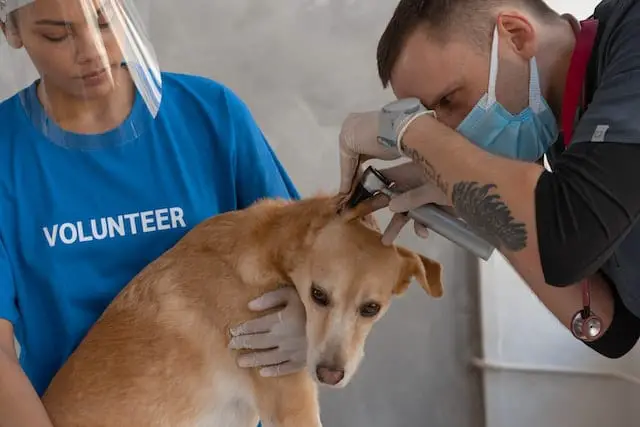
What is otohematoma in dogs and how does it form? Everything you need to know about this problem to cure it in the best possible way and as soon as possible.
Our dogs: how many joys but also how many worries they can give us, especially when it comes to their health. Every part of their body should be checked at the vet’s visit, ears included, also to avoid the evolution of some annoyances and diseases that could arise. So here’s what you need to know about otohematoma in dogs, what are the typical signs and how to treat it.
Otohematoma in dogs: what it is
Etymologically, the word gives some fundamental indications: it is in fact a collection of blood (hematoma) which gathers at the pinna of the ear (as indicated by the root ‘oto-‘).
With the naked eye we will be able to notice an unusual swelling in the ear, often characterized by a purplish or otherwise bright color. You may also notice the same area throbbing and feeling warm to the touch. At first it will not seem to be particularly annoying, but over time it could degenerate into canine otitis.
What can cause otohematoma in dogs: the main causes
It is usually following a trauma that our poor dog could develop this type of problem: it usually occurs following a blow to the head, an attack on the ear by another animal or a sudden itch that forces the compulsive scratching, irritating the area (even causing it to bleed).
Otohematoma in dogs: how is it treated?

The only solution to eliminate this collection of blood is surgery, after which, however, the owner will have to manage the post-operation. It will have to become familiar with bandages, medications and antibiotic treatments, always following the prescription of the veterinarian who naturally treats dog.
The surgeon will proceed with an incision in the skin of the pavilion and, after removal, there will be a suture which will restore the vascularisation of the area. Antibiotics will serve precisely to avoid the risk of infection and the formation of pus.
As an alternative to surgical removal, there is also aspiration of the part : we proceed in the laboratory but the greatest risk is that the problem ‘is not resolved’ completely and there is always the danger of blood reforming.
